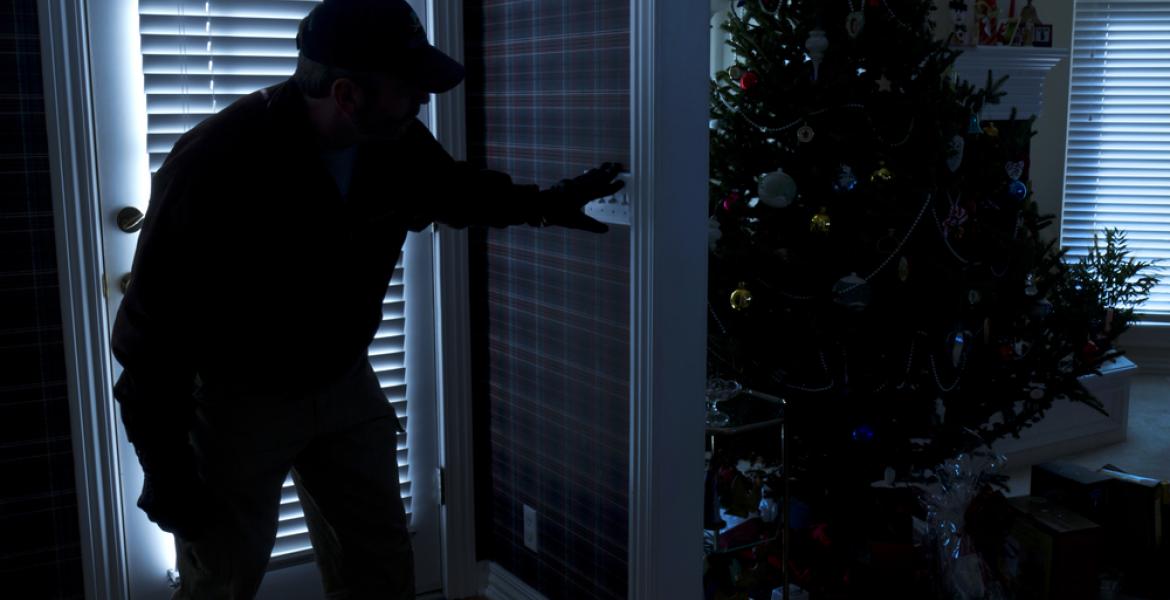Anna Harding has been in jail for the past nine years, and she loves it. Beginning at the county’s juvenile justice center as a corrections officer and promoting to sergeant at the county jail, Harding commands the 6 p.m. to 6 a.m. shift behind the thick walls of the TGCJ four nights a week, and is responsible for between 350-449 inmates at a time.
“I either wanted to work in medical or law enforcement,” the sergeant said. “I worked at Ethicon for a while…and I got laid off, then I put in an application at Shannon…”
After an emotional period during her pregnancy spent between jobs, Harding saw a post advertising employment at the juvenile justice center and applied.
“It changes your way of thinking,” she said. “Before getting hired there, my son was starting school and it was like, ‘everybody meet up here, let’s see who has the first date, let’s take pictures, it’ll be great.’ Then when I worked at the juvenile center, my oldest daughter was starting school and I was terrified. I was crying, I didn’t want her to go. So much happens that you wouldn’t even be aware of until you work there and see what’s going on.”
Harding said she was taken aback at the amount of pedophilia, incest and assaults that were occurring among the teens and tweens in the county. Due to her experience as a correctional officer, she said, Harding has become a more wary parent.
After two years at the juvenile center it was time to promote, and that meant moving up to the county jail, where she currently works.
“I couldn’t tell you what the difference is,” she said. “You just have so much here, so much going on. So much that it’s just—to focus on one person would be ridiculous. You have a job to do, to be firm but fair and I feel like I’ve lived that by working here.”
Day In, Day Out
When the shift begins in the county jail, officers first account for the inmates, ensuring that all are present and where they are supposed to be. Friday night starts out with 362 men and women in custody, but a series of incidents that afternoon has led to four being transferred to Shannon Medical Center.
Sgt. Harding and Corporal Munoz read through a number of bullet points in a lengthy email after count, checking the “pass-ons” from the supervisors of the previous shift, which detail a fight that took place between two of those in the hospital and a heart attack and stroke that had also taken place.
The jail can’t run without 15 corrections officers on duty, and until some of the inmates and the officers watching them return, COs scheduled for a day off are working overtime.
After head count, the cell doors are unlocked and inmates are allowed to congregate in the day room, which in the pods has a few steel tables with toadstool seats and a television.
Twenty-three hours a day are spent in either individual cells or in day rooms, with one hour dedicated to recreation, an optional privilege. The rec room is a shoebox-shaped room, with gray cinderblock walls and high ceilings. In the past, a basketball goal hung from one of the far walls, but that goal has been repeatedly torn down. Now, there’s nothing there except for a few jailhouse messages scratched into the paint.
At midnight, the entire facility goes on lockdown and inmates are ushered into their cells after a final head count and their lights are shut off. Switching through various screens displaying camera feeds from cells all over the facility, Harding notes how the inmates tend to stay awake at night, moving around in the darkness, and sleep during the day.
Although the lights are shut off and some are sleeping, the prisoners are constantly watched, both in the pods and in the individual cells.
The lights remain off until 5 a.m., when the inmates are “unracked” and medications are disseminated. Monday through Friday, nurses on staff from Shannon Medical Center handle the medication distribution, but on weekends, the COs are responsible for sacking them up and making sure each individual gets what they need.
“A lot of them have been self-medicating on the streets, so they get here and they’re instantly diabetic, they’re instantly epileptic,” Harding said. “Medical is a big thing here.”
The sergeants and corporals do cell checks twice a shift and check on the officers at the same time. The officers on the floor also continually check the inmates, and bring them what they need, as permitted.
Downstairs in booking, several holding cells line the circular wall surrounding the booking station. Here, the sergeant and corporal complete their shifts, keeping a constant eye on the many cameras scattered throughout the facility and responding as needed to incidents in other parts of the jail.
When inmates are booked into the jail, they are generally put into either a holding cell or a drunk tank. Those who will not bond out are placed in population as quickly as possible, Harding said, and no one may remain in holding for more than 48 hours.
“Down here, especially on the weekends, our single cells are very important to us,” she said. “There have been times where we had one individual in each cell because they are being combative, they’re either suicidal or they have something that we don’t want them to spread. Detox is a major one. We could tell a couple of months ago that we had a really bad batch of drugs on the streets because it was, it was—people were suffering. It was bad.”
Inmates in holding and drunk/detox cells are checked every 30 minutes, Harding explained, unless one has come in suicidal, in which the time is halved.
There are 10 duty stations in the jail, including two officers watching pods and two walking between them, center control, which is manned by two officers, property, ID, booking/releasing, backside and the inmate barracks.
Inmates are distributed throughout the facility based on classification and mental health. Each inmate is classified based upon his prior convictions and current charge, ranging from minimum to medium to maximum. Medium level inmates can be housed with anyone, while maximum can only be housed with other max and medium inmates, and minimum can only be housed with minimum and medium levels.
“We have separation, so if this inmate had ever gotten in a fight or she’s suspected gang member or something, so that when we go to house them, they can’t hurt anyone else,” Harding said.
Atmosphere
Almost anything can change the climate of the jail, Harding said, swearing by the full moon. Bad visitations, menstruation in the female inmates and even weather patterns all affect the mood, she said, but the COs are there to maintain the peace and keep the climate mild day in and day out.
On Friday night, members of two branches of the same gang had been having issues, as one guy heckled the other. Harding brought up a list of inmates in one of the pods—cellblocks similar to modern prison documentaries, that feature a semi-circle of cells on two levels with a common space in the center known as the day room.
Checking the inmates’ classifications, Harding found a minimum/medium pod and gave the order over the radio to move the inmate that was being harassed.
Harding said aside from the violence and the gang affiliations, one of the major issues inside the jail is the prevalence of mental illness.
“We deal with crazy. I think we’re a hospital most times,” she said. “You would never guess how many bi-polar people there is out there, or how many people see [things], how many suicidal people there is. There is a lot of emotionally-disturbed people out there and you would not believe it until you worked here.”
Recalling instances of inmates smearing feces on themselves and on the walls, violent offenders and a current inmate who has been repeatedly “flushing the devil down the toilet”, Harding explains that the job requires a strong personality and the ability to compartmentalize.
“I had to get a talk one time from my sister, just because she felt like I needed to relax a bit,” Harding said. “She just felt that maybe a little bit of my work was drifting into who I was at home. I didn’t realize it until I had to stop and sit back.”
On the job, COs are repeatedly lied to and exposed to people who are trying to take advantage of them, Harding said. The experiences are things the sergeant doesn’t feel family can relate to, which makes coping with things outside of work difficult and calls for more separation.
“You are somebody different here,” she said. “Some of our street officers get into something and we feel it to. I think it affects us. Recently, with the Delacruz situation, we had a couple officers that used to be jailers here that were in that situation that when they came in you could tell that they were not themselves. It hurts you, because we feel it too.”
Men vs. Women
The overwhelming majority of inmates housed in the Tom Green County Jail are men, and they have their own way of handling things.
Violence is more common among the men, and altercations happen fast, sometimes physically starting and ending before officers can respond. Women, on the other hand, tend to engage in more emotional and psychological fighting, oftentimes making threats before they come to blows.
In a late-night shakedown of several male-populated pods, officers located a peanut butter jar filled with prison wine and eight modified ink pens filled with pencils, needles or black cartridges.
“Tattoos are a big thing here, too,” Harding said. “They find ways to [make guns and needles].”
Where men are busy crafting tattoo guns with elaborate systems that involve stringing wires from the overhead light to a tub of water and over to the toilet, women create concoctions using creams, lotions and map colors to create their own brand of makeup, dubbed “Mapeline”. They’ll also dye their hair with Kool-Aid, color their lips with M&Ms and make eye masks out of string and maxi pads.
“The girls aren’t as crafty as the guys,” Harding says. “They want to stock up on pads and put it on their face or put it in their shoes to be more comfortable. They ask for pads for that. Medication and pads is probably as smart as they get. The guys on the other hand—I’ve seen some guys come up with some stuff that I had no idea that the could do.”
Trustees
“These guys right here are what make the jail go round,” Harding said, motioning to a window that was split in the middle, dividing two barrack-style cells each housing 24 inmates.
The barracks, which were built in the 1990s, were meant to be temporary housing at the time, but have been in use ever since. Nowadays, trustees occupy the barracks, 48 men separated only by a wall and the color of their jumpers.
As they sit, the majority on bunks facing forward, kitchen trustees in green, floor trustees in orange stripes and outdoor work detail trustees with black and white stripes talk and watch the television.
The setup is mirrored on the other side, which can house up to 48 women, some of which are also trustees, but who have never left the facility to do work like the men do. The females are used far less for work around the jail, but the men work on rotating schedules—some through the night—aiding not only the booking and ID staff, but firing up the kitchen at 3 a.m. to get a start on the jail’s breakfast.
Handling Incidents
When a fight breaks out in the jail, officers respond to the cells and follow a procedure that varies depending on the shift. On Friday afternoon, when the fight broke out, COs ran into the pod and demanded everyone “get down on the floor”.
Inmates dropped to the floor of the cells, while officers approached the two in the fight and assessed the damage. On her shift, Harding explained, the COs lock down all the cells before going in.
If it’s not immediately clear who was involved in the fight, officers go around and check their knuckles, looking for redness, bruising and any indicators that they’ve been involved in a physical altercation.
Incidents are commonplace in the jail, where a population comprised of an estimated 70 percent gang members frequently clash against their rivals. “Tank bosses” run individual blocks and pods, and sometimes find themselves in a battle for power with a shot caller for a rival gang is populated in their tank.
“You can tell right away by the way they address the officers that they need to be busted up,” Harding said as she scrolled down the list of inmates in pod five. Several shot callers had been placed the same pod over time and a CO on the Friday night’s shift had noticed tension rising.
The violence has escalated in recent years, officers said, noting a generation change where lines are blurred and an “I don’t care” attitude supercedes the say nothing and react preference of old.
Whereas when Harding started, COs would have cause to use the taser maybe once a month, nowadays they’re taking it out several times a week, as inmates become more aggressive.
As the county’s jail population grows along with that beyond its confines, finding compatible housing becomes more of an issue. The jail is a hodgepodge of several different styles of facilities remodeled and added on over the span of four decades.
Lockdown cells were sparse on Friday, even as the jail operated at roughly 100 under capacity. Those who needed to be separated from others for their own and others’ safety were in constant shuffle as altercations ensued, and rival leaders of opposing gangs were often housed in the same cell.
At the moment, a study is being conducted to assess the needs of the jail for the next 50 years, and officers and the sheriff have been visiting other counties for ideas. The needs assessment has been in progress for roughly two weeks now, and should be completed within the next two months.
Subscribe to the LIVE! Daily
Required






Post a comment to this article here: